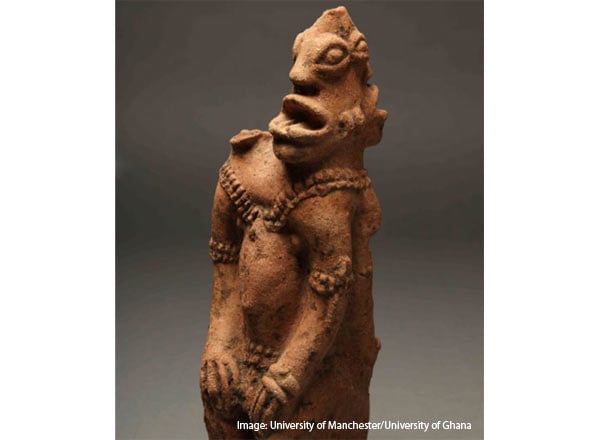One of the figures which was ritualistically filled with libations
Forensic analyses of the hollow cavities inside pre-colonial terracotta figurines from Koma Land, northern Ghana have revealed the exotic contents of libations poured inside them during traditional West African rituals.

Researchers from University of Manchester tested the biological contents of a series of terracotta forms which date to the 6th-14th centuries AD. Using swabs and a magnetic extraction method, Professor Terry Brown and PhD student Heather Robinson recovered and reconstructed genetic traces, rarely a possibility at exposed Sub-Saharan sites.

The findings demonstrate a ceremonial use of imported plants such as pine and banana within the figurines. As Robinson tells CWA, “Neither of these plants are native to Ghana.

Pine has traditionally grown only on the northern coast, and this is the earliest biological evidence we are aware of for banana or plantain arriving in West Africa. Our results suggest that this ancient community had a rich spiritual tradition, incorporating goods received through far-reaching trade connections.”





